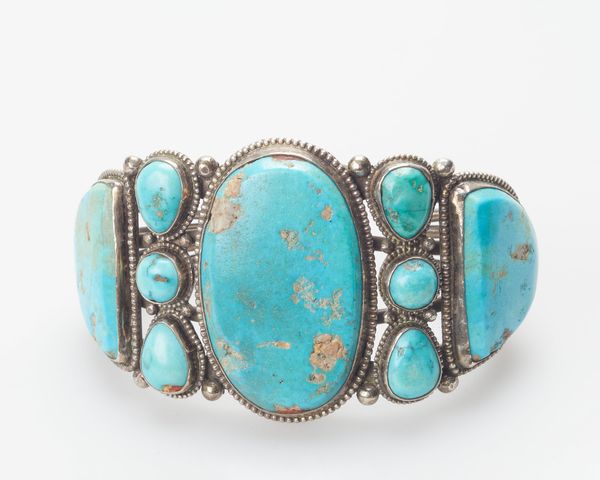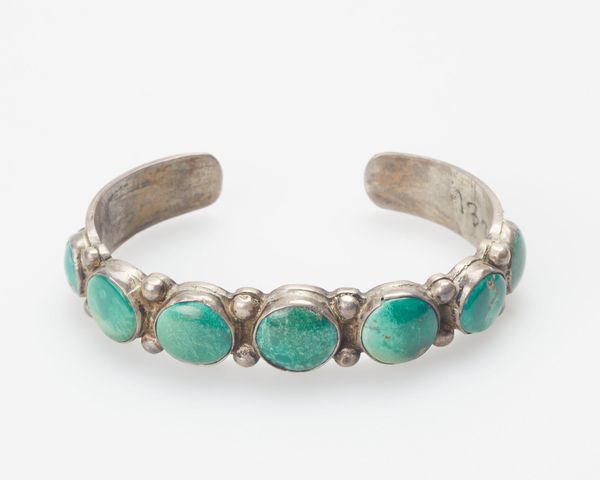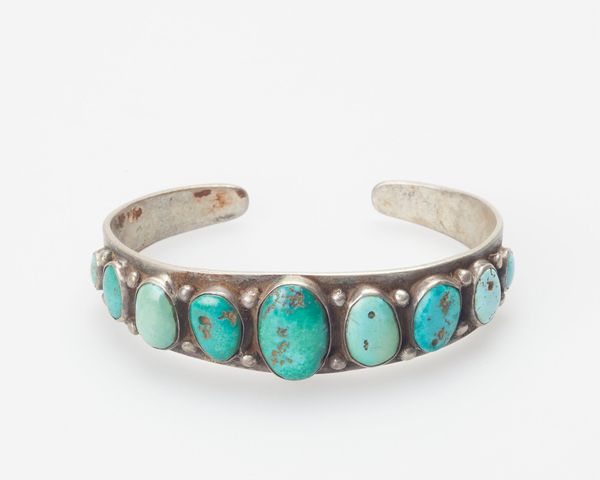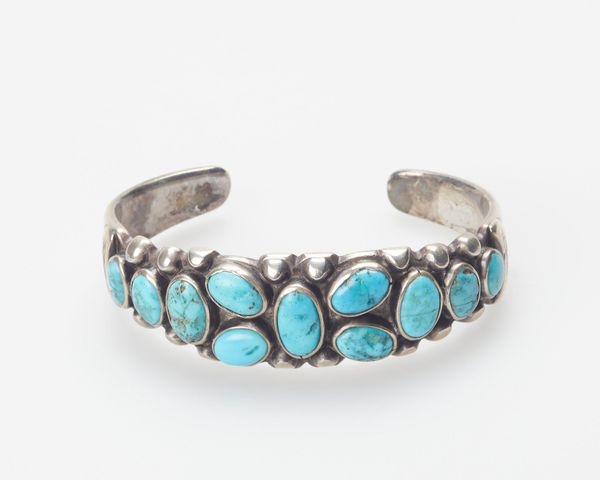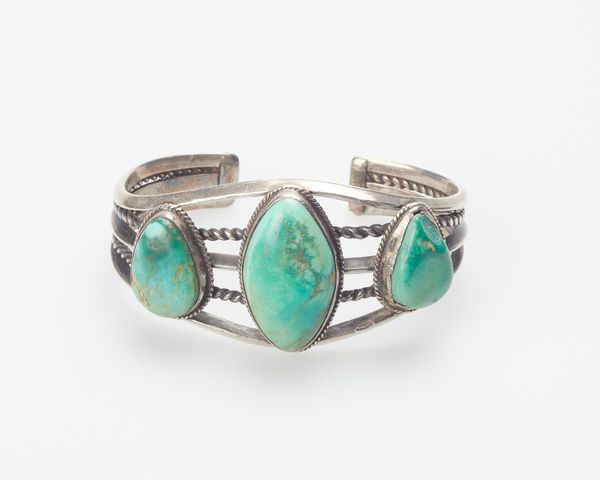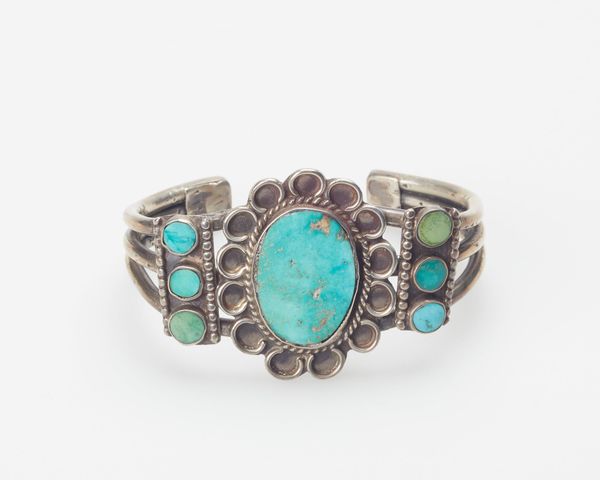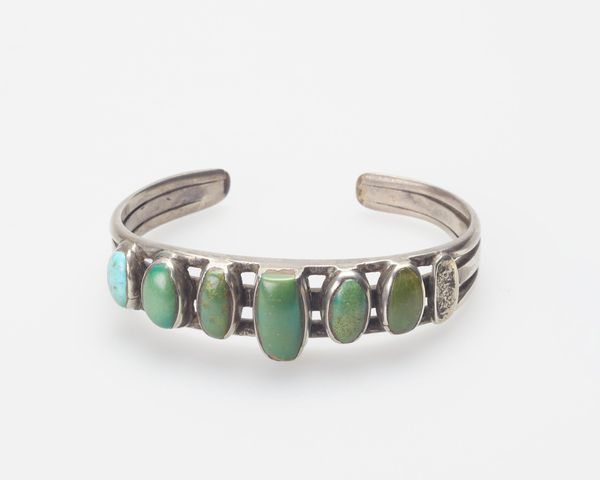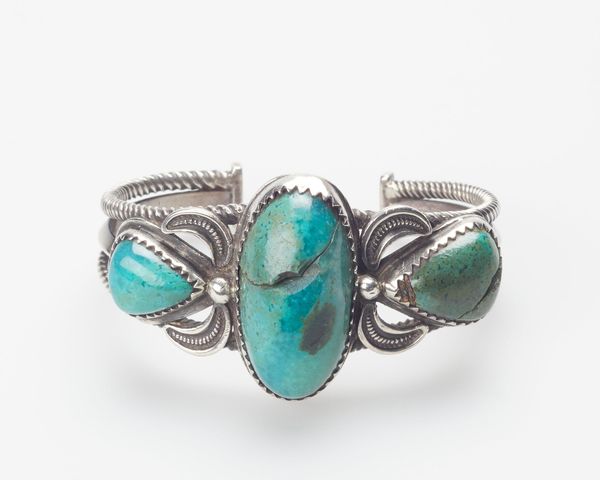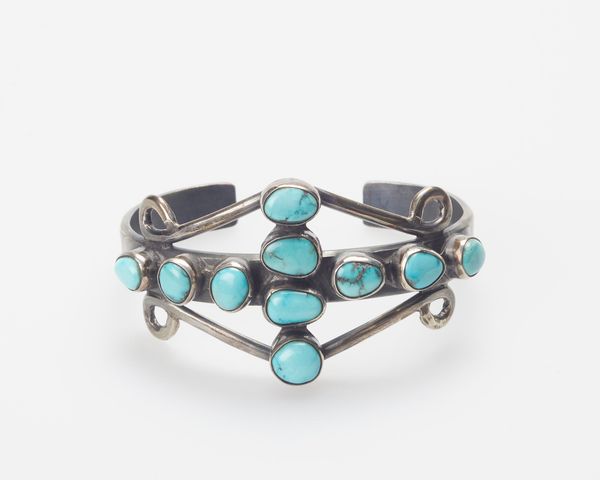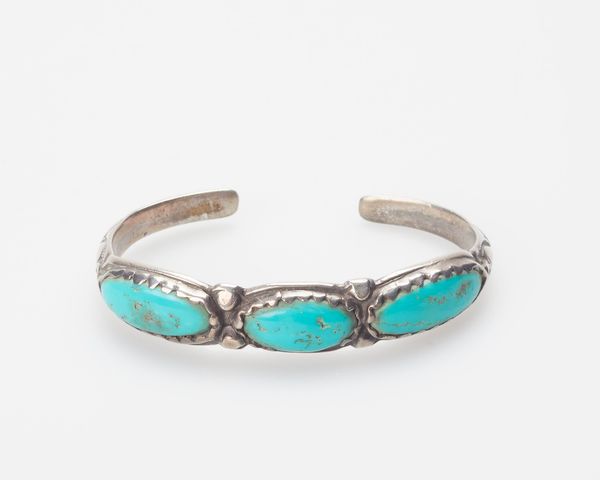
silver, metal
#
silver
#
metal
#
indigenous-americas
Dimensions: 2 7/8 x 1 3/8 in. (7.3 x 3.49 cm)
Copyright: Public Domain
Curator: Just look at this bracelet. It has such a soothing presence. I can almost feel the coolness of the turquoise just by looking at it. Editor: This particular bracelet, dating from around 1930, comes to us from the Navajo, or Diné, people. It's made of silver, set with a collection of beautiful turquoise stones. It currently resides at the Minneapolis Institute of Art. Curator: You know, it's fascinating to consider the labor involved in creating something like this. From mining the silver and turquoise to the meticulous crafting process, each stage represents a significant investment of time and skill. How were these materials obtained? Was the silversmith part of a family tradition or working in response to commercial demands? These are the kinds of questions that really intrigue me. Editor: Absolutely, and we must contextualize those questions by considering broader factors affecting the Navajo people during this period. The early 20th century was a period of immense cultural and political change, a legacy of colonialism continued to impact Indigenous communities. Pieces like this bracelet may simultaneously represent cultural continuity and a negotiation of economic and cultural exchange with non-Indigenous society. Were they producing this solely for their community, or to generate income through sales to tourists or traders? What does the design communicate about Navajo identity and resilience? Curator: That's a key point. Considering the bracelet's form—the arrangement of the turquoise, the shape of the silver settings—how might those design choices relate to available materials and tools, or even the preferences of particular consumers? The relationship between artist, material, and consumer is really complex and intriguing in Indigenous art of this era. Editor: And what stories does it silently narrate about the lived experiences of Indigenous women? Was this an item used in specific ceremonies or was its appeal intended more broadly? These objects provide tangible touchstones to understanding cultural resistance, the evolution of trade relationships, and, really, what survival looks like. It serves as a stark reminder of power, exploitation, resistance and continuity. Curator: Yes, there's something deeply compelling about the ability of everyday objects to embody those complex historical and social dynamics. Editor: Seeing the skill, resilience and cultural expressions embodied within such objects really gives pause and offers pathways for difficult yet imperative discussion.
Comments
No comments
Be the first to comment and join the conversation on the ultimate creative platform.

